Get PeakVisor App
Sign In
Search by GPS coordinates
- Latitude
- ° ' ''
- Longitude
- ° ' ''
- Units of Length

Yes
Cancel
Share ×

Scan the QR code and open PeakVisor on your phone
❤ Wishlist ×
Choose
Delete
The Greek Ranges is a collective name for all the mountains in Greece. The main feature of these ranges, besides their natural diversity and uniqueness, is their rich historical and cultural background. There are 4661 named peaks in the Greek Ranges, the highest of which is Mytikas (Μύτικας) on Mount Olympus (Όλυμπος) at 2,918 m (9,573 ft) in elevation. The most prominent peak in the range is Psiloritis (Ψηλορείτης).
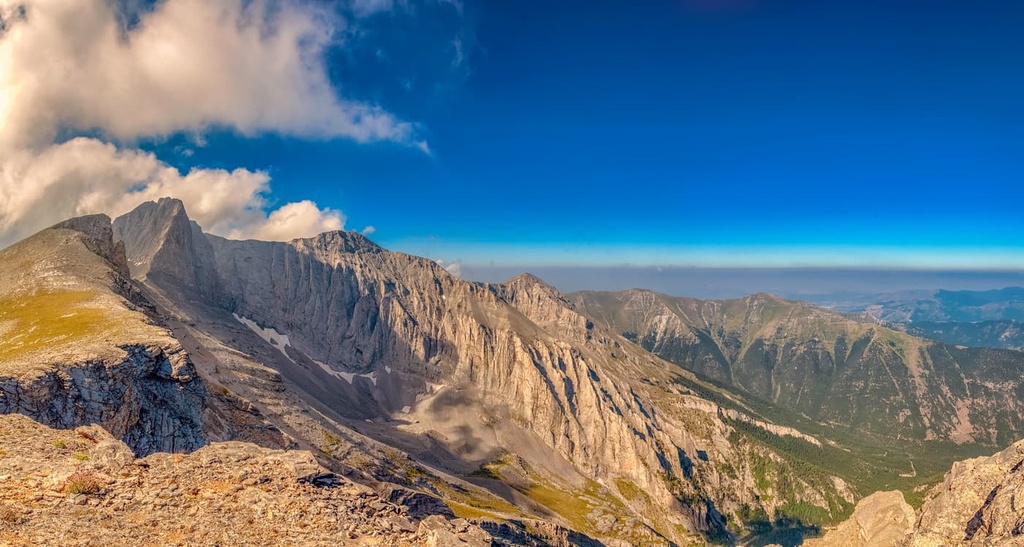
The name Greek Ranges (Ελληνικές σειρές) logically comes from the name of the country of Greece. The English name for the country is of Latin origin (Graecia for Greece and Graecus for Greek). The Greeks themselves call their country Elláda (Ελλάδα).
Furthermore, the word Graecia is derived from the name of one of the first tribes to inhabit the region, the Graeci peoples. Some researchers believe this word means "to grow old.” Elláda is the name of a historical area in central Greece, though it eventually became used as the name for the entire country.
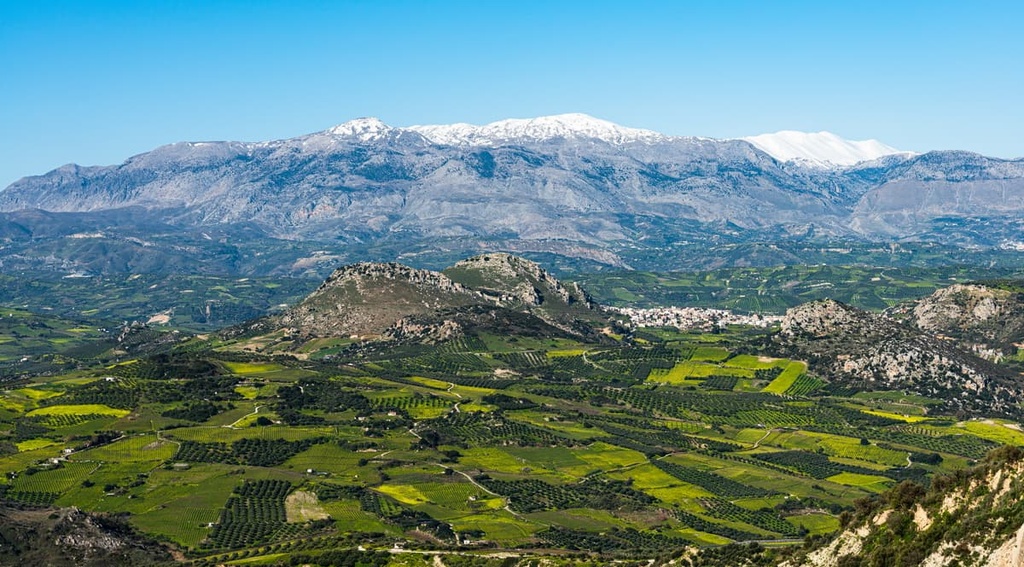
The Greek Ranges cover about 80 percent of mainland Greece, which itself is located on the southern tip of the Balkan Peninsula in southern Europe. The remaining 20 percent of the country consists of islands, the total number of which reaches 6,000. However, only around 1,200 of these islands are relatively large in size and only about 227 of them are actually inhabited.

The main mountain range in Greece is called the Pindus Mountains (Πίνδος). It is located in the western part of the country (but is usually said to be “in the center” of Greece, given the small size of the country), and it stretches from the northwest to the southeast. For this reason, it is also often referred to as the “Spine of Greece.”
We can say that the range begins in Albania because, geologically, the Pindus Mountains are part of the larger Dinaric Alps, which cover almost the entire western part of the Balkan Peninsula.
The Peloponnese Peninsula with its local Taygetus Mountains is considered the southern boundary of the main Greek range. But these mountains actually extend beyond the peninsula and across the Aegean Sea. In the Aegean Sea, these peaks appear as individual islands or as the high points of some of the country’s largest islands. Eventually, the Pindus Mountains join the Taurus Mountains of southern Turkey.

But the Pindus Range, Taygetus Mountains, and the peaks of the Aegean Islands are not the only mountains in Greece.
There are several other large and important ranges in Greece, including the Voras Mountains in the north near the border with North Macedonia, Mount Olympus approximately in the center of the mainland Greece, the Rhodope Mountains in the northeast near the border with Bulgaria, as well as the mountains of the largest island of Crete.
In all, there are at least seven major parts of the Greek Ranges:
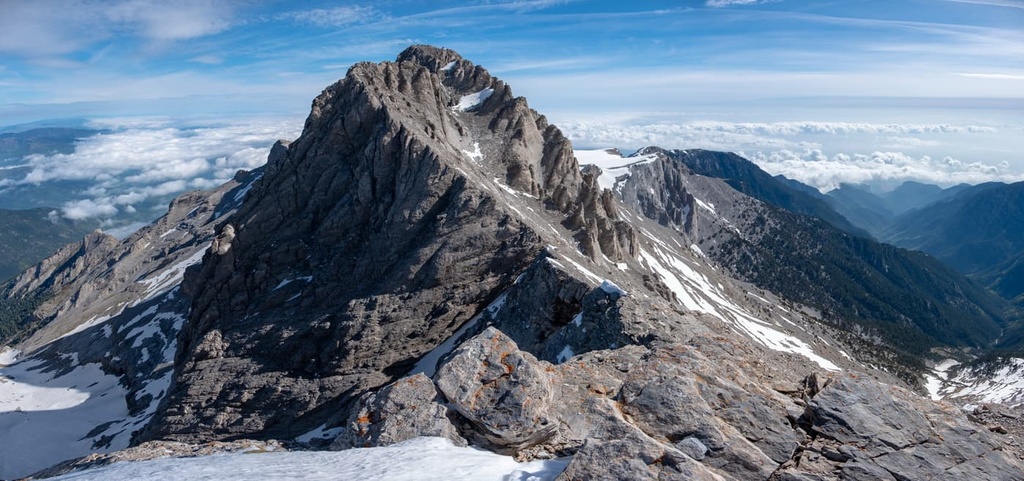
Last, but not least, the Greek Ranges in Central and Western Greece also have many canyons and karst landscapes.
The main canyon is Vikos Gorge, which is located in northwestern Greece in the Pindus Mountains. It is actually one of the world's deepest canyons relative to its width and length. That’s because it is 32 km long, 2,000 to 2,500 m (6,500 to 8,200 ft) wide, and up to 1,350 m (4,400 ft) deep.
There are also two famous gorges on Crete Island: Samaria Gorge—the longest in Europe at 16 km (9.9 mi) in length—and Krista Gorge.
The most famous karst formation of Greece is Meteora (Μετέωρα), which is a series of freestanding rocks that is also home to one of the largest clusters of Eastern Orthodox monasteries in the world.
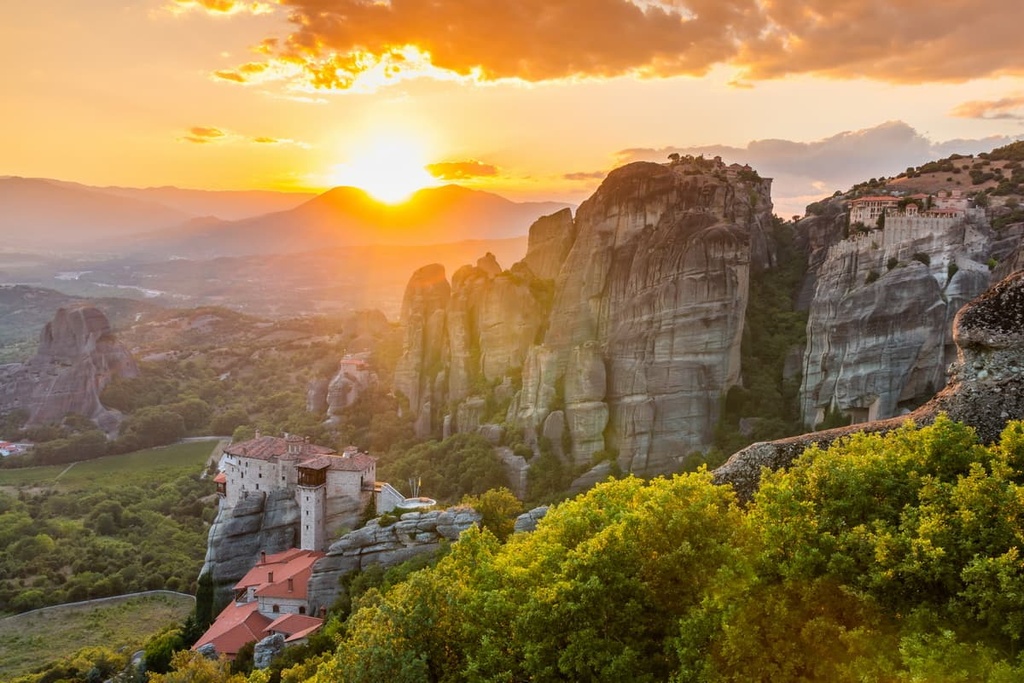
The geology of the Greek Ranges is quite complex. In the range, there are at least 15 distinct geological areas, the largest of which is the Rhodope massif in the northeastern part of the country. There is also the Pelagonian Zone that underlies much of central Greece and the Pindos Zone under the Pindus Mountains.
Other smaller but also important zones in the country include the Paxon (Proapoulian) Zone in the extreme western part of Greece on the shores of the Ionian Sea, the Atticocycladic Zone at the base of the Cyclades Islands Archipelago, and the Gavrovo-Tripolis Zone, which is located on the largest Crete Island.

The other geologic areas of Greece include:
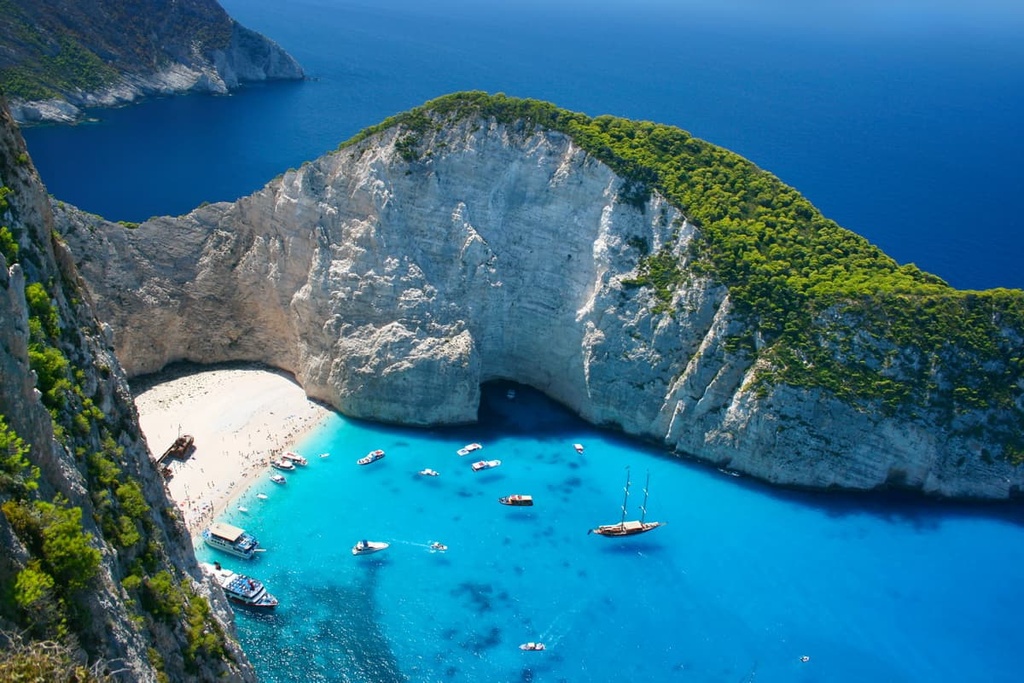
With respect to the rocks in the range, in general, the oldest of them are of metamorphic origin and they date back to the Paleozoic era (541–252 million years ago). For example, in the Rhodope Mountains, there are large areas with marble and gneiss with granite intrusions.
But there are also younger sedimentary deposits that date back to the Cenozoic era (66 million years ago to the present). Various types of limestone are found throughout the Aegean Islands, too.
The third major type of rock found in the Greek mountains is of volcanic origin, which is of no surprise given that there are many volcanoes in the Aegean Sea. Actually, Greece is home to one of the most well-known volcanic arcs. This arc was created by the sinking of the African lithosphere (Oceania) under the Eurasian plate (mainland).
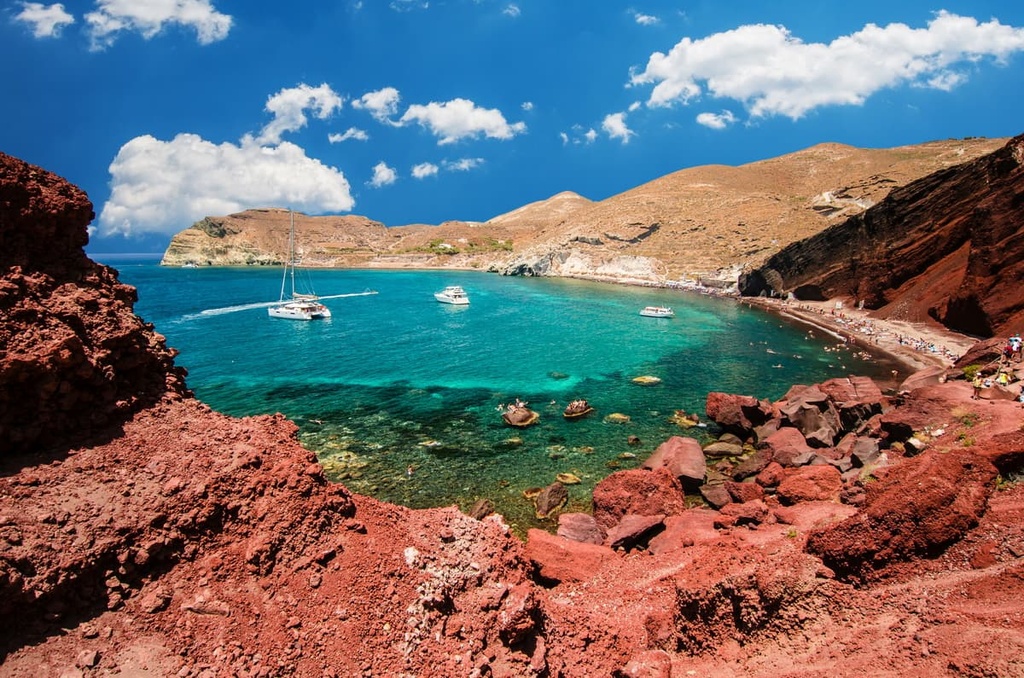
In addition to the seven major Greek Ranges, there are more than 40 smaller ones, many of which exceed 2,000 m (6,561 ft) in elevation. Ultimately, wherever you go in Greece, you will find mountains, including on any of the country’s thousands of islands.
Here’s a look at the many subranges of the Greek Ranges, as organized by the country’s administrative regions.
The mountain ranges of Attica (Αττικής) include:
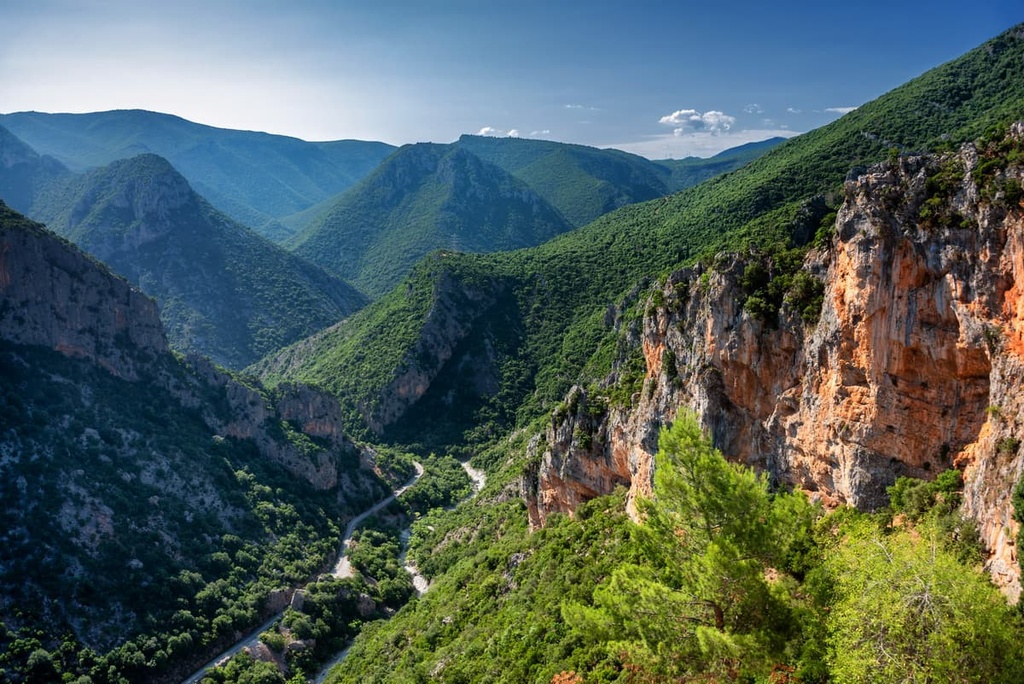
The mountain ranges of Macedonia and Thrace (Μακεδονίας–Θράκης) in Central Macedonia (Κεντρική Μακεδονία) include:
The mountain ranges of Eastern Macedonia and Thrace (Ανατολική Μακεδονία και Θράκη) include:
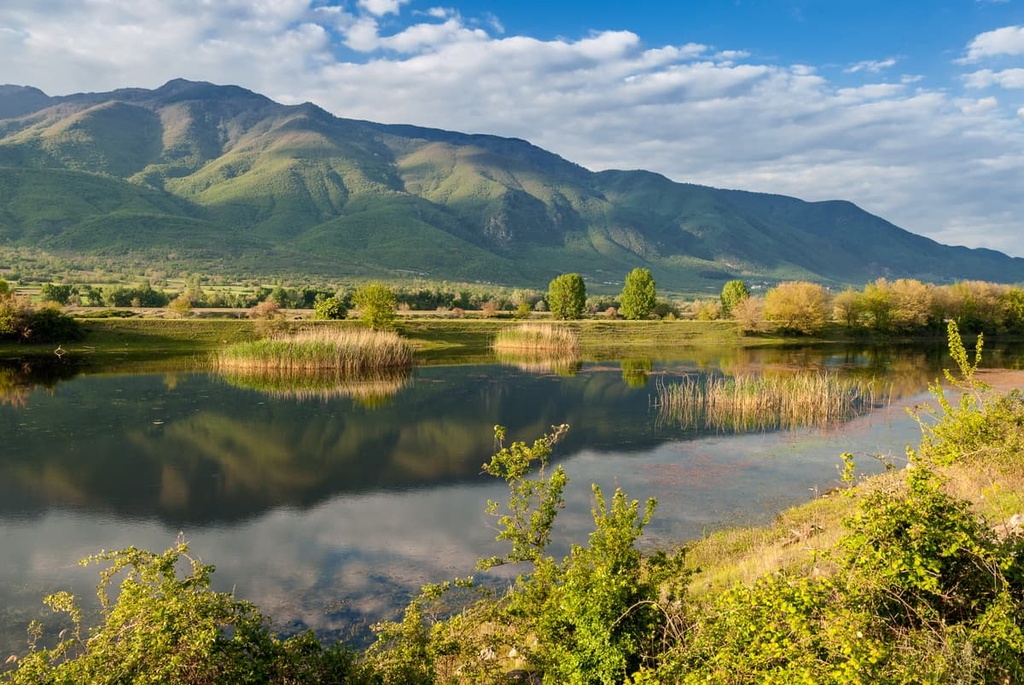
The mountain ranges of Epirus and Western Macedonia (Ηπείρου-Δυτικής Μακεδονίας) in Epirus (Ήπειρος) include:
The mountain ranges of Western Macedonia (Δυτική Μακεδονία) include:
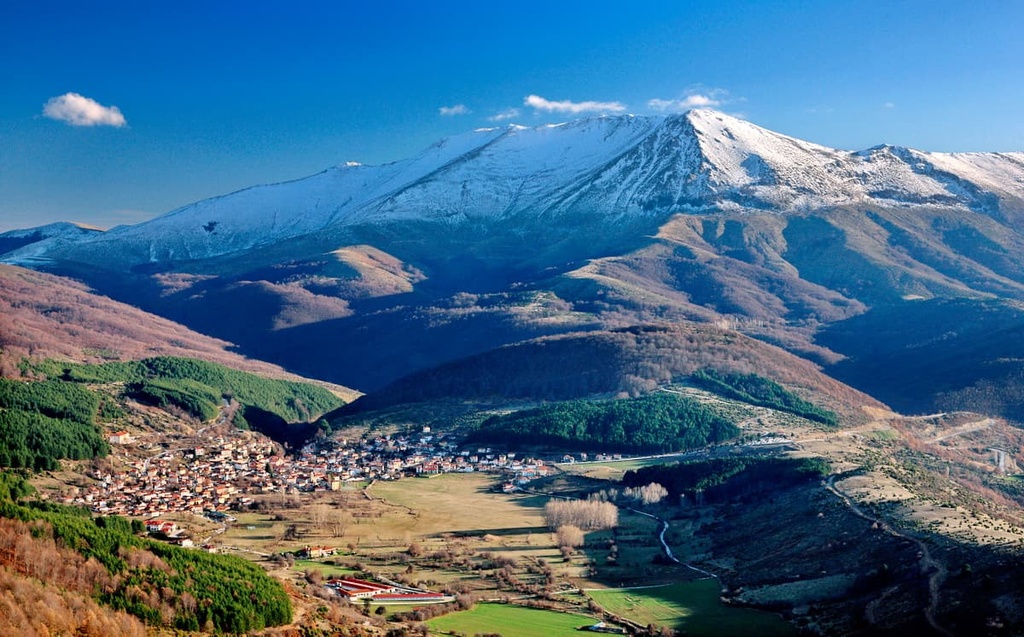
The mountain ranges of Thessaly and Central Greece (Θεσσαλίας-Στερεάς Ελλάδας) in Thessaly (Θεσσαλία) include:

The mountain ranges of Central Greece (Στερεάς Ελλάδας) include:

The mountain ranges of Peloponnese, Western Greece and the Ionian (Αποκεντρωμένη Διοίκηση Πελοποννήσου, Δυτικής Ελλάδας και Ιονίου) in the Peloponnese (Πελοπόννησος) include:
The mountain ranges in Western Greece (Δυτικής Ελλάδας) include:
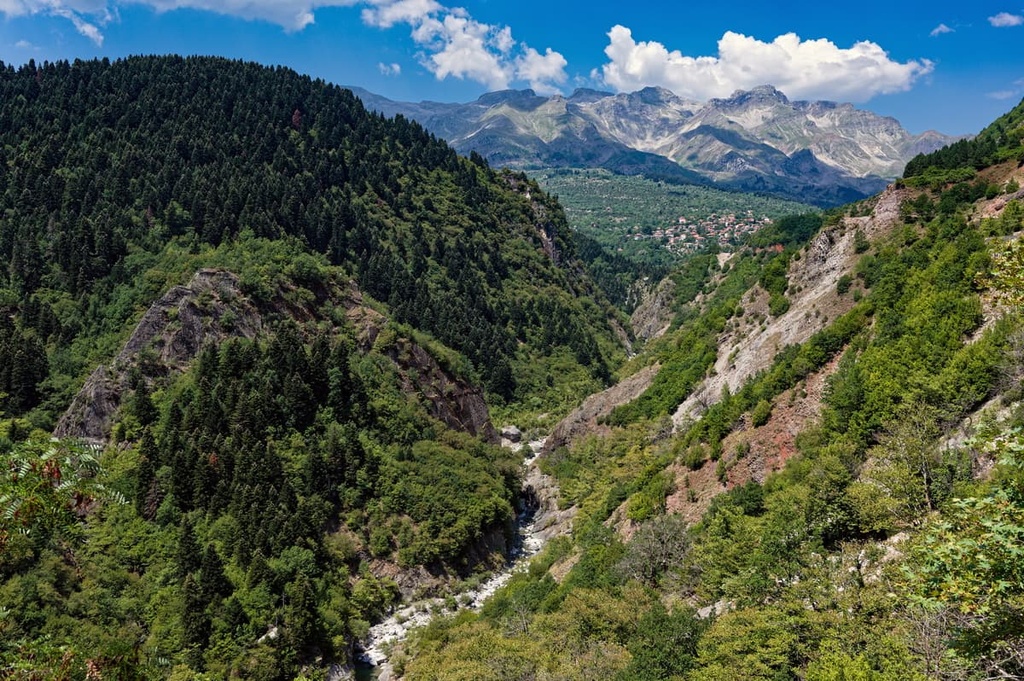
The mountain ranges in the Aegean (Αιγαίο) include:
The mountain ranges of Crete (Κρήτη) include:
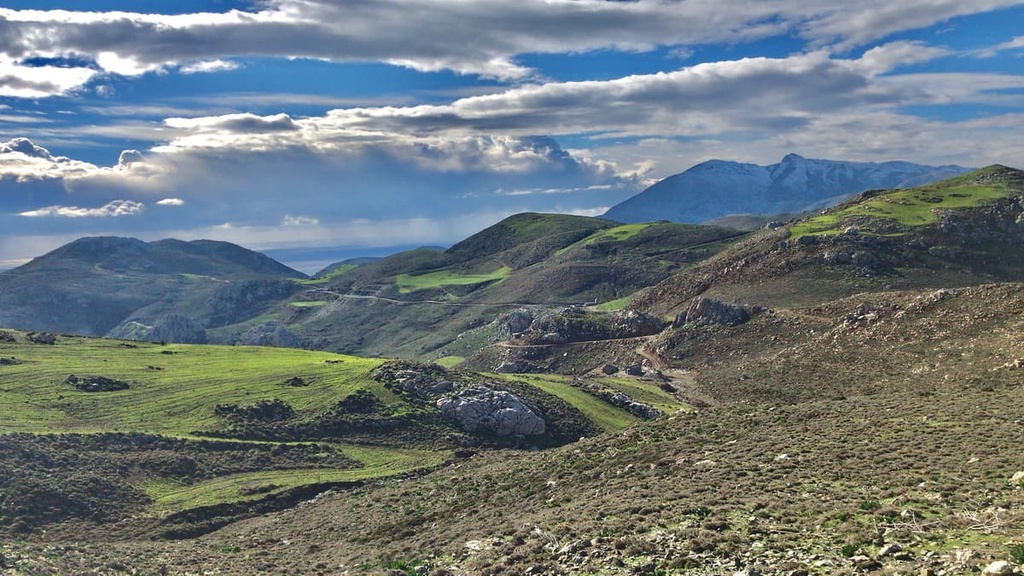
Given that the Greek Ranges cover the entire country of Greece, there are hundreds of different hiking areas to choose from in the range, as well as many longer trekking routes. Here’s a look at some of the main hiking areas in the region to check out during your next trip to Greece.
As is the case in most countries, the main areas for hiking in the Greek Ranges are Greece’s national parks. There are a total of 27 national parks in Greece, at least ten of which are located in the mountains on the mainland.
The main national park in the mountains of Greece is arguably Pindus National Park, which is located in the northern part of the Greek Ranges. Other large and notable parks in the region include Sounion National Park, which is located to the west of Athens, and Ainos National Park, which is situated around the highest mountain of the Ionian island of Cephalonia—Mount Aenos or Ainos (Όρος Αίνος).
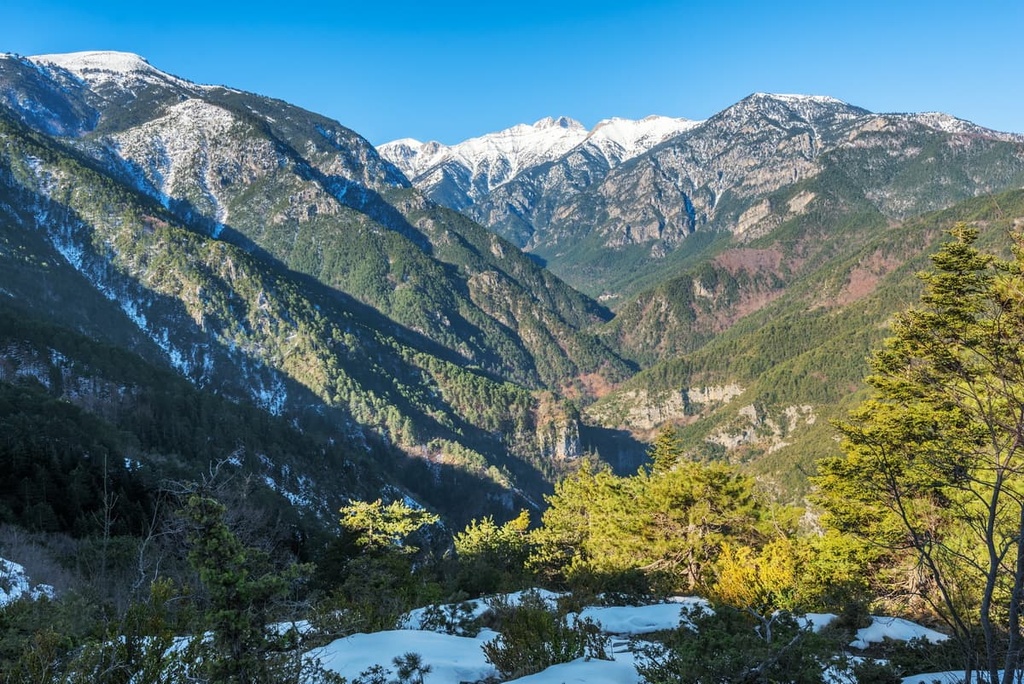
In addition to these parks, some of the other popular hiking areas in Greece include:
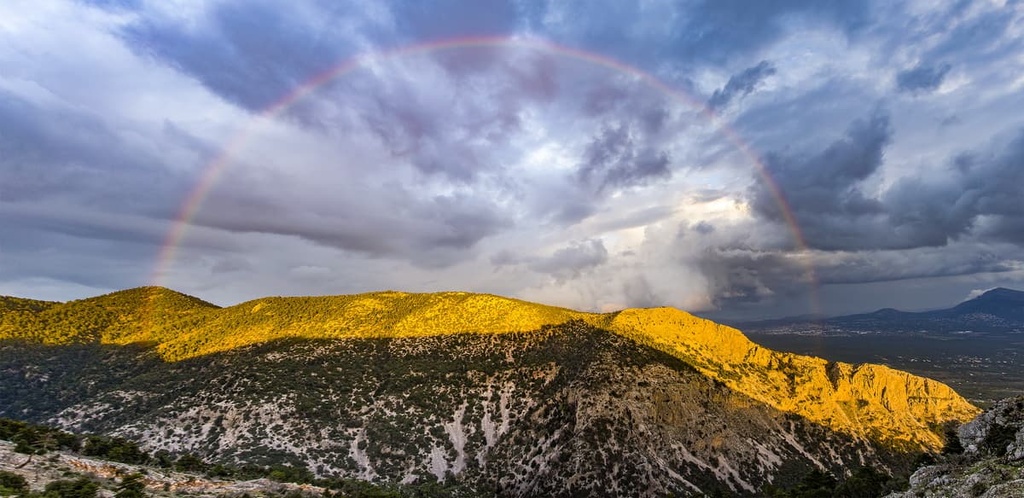
But, of course, these are not the only hiking areas in the Greek Ranges. Others include all kinds of regional parks and nature reserves like Lefka Ori Nature Reserve (White Mountains). There are also many geoparks, large archaeological parks, and UNESCO sites in the region, among other protected areas.
The Greek Ranges are famous for being home to a number of long-distance hiking trails. Here’s a look at some of the main trekking routes in each of the country’s main geographical regions.
Mainland and Peloponnese:
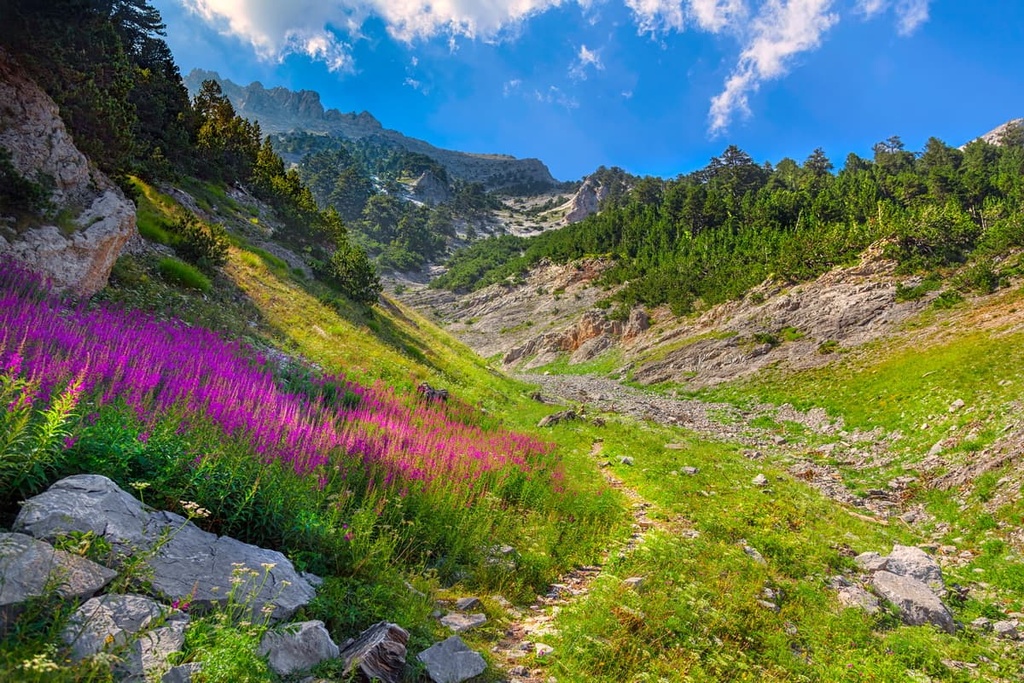
Greek Islands:
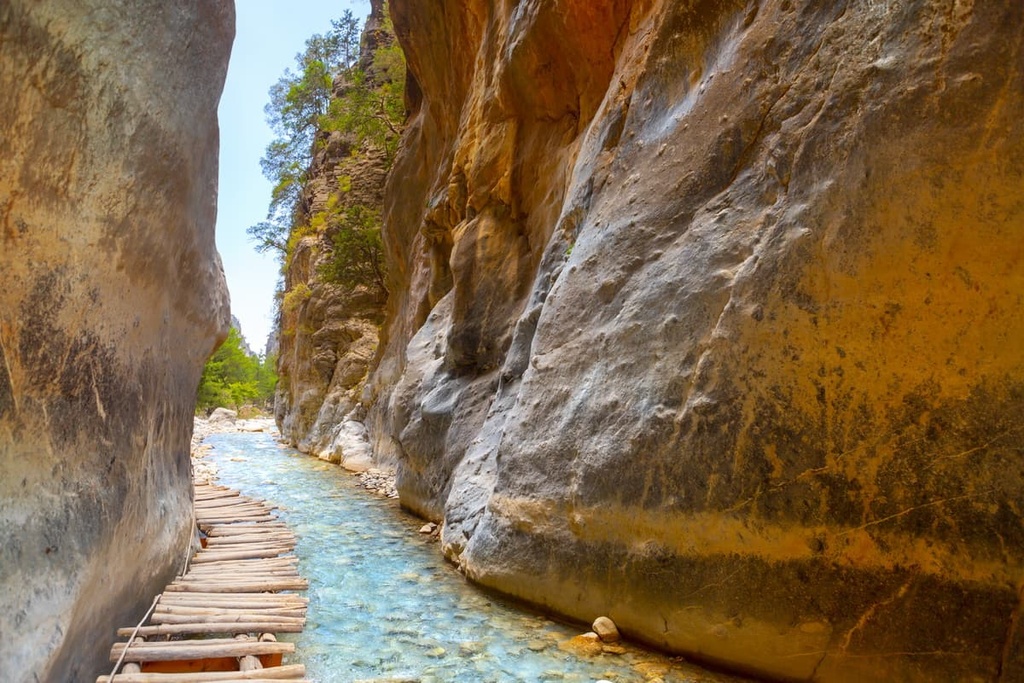
When it comes to skiing in Europe, Greece is not one of the most popular destinations. That’s because it is outshone by the Alpine countries of France, Italy, Austria, and Switzerland, among others.
But if you look at it in the context of the Balkans, Greece is one of the main countries in the region for skiing on par with Serbia, Montenegro, and Bulgaria. So if you find yourself in the mountains of Greece during the winter, remember that there are more than 25 ski resorts in the country with over 200 km (124 mi) of ski trails and more than 110 ski lifts.
Some of the largest ski resorts in the country include:
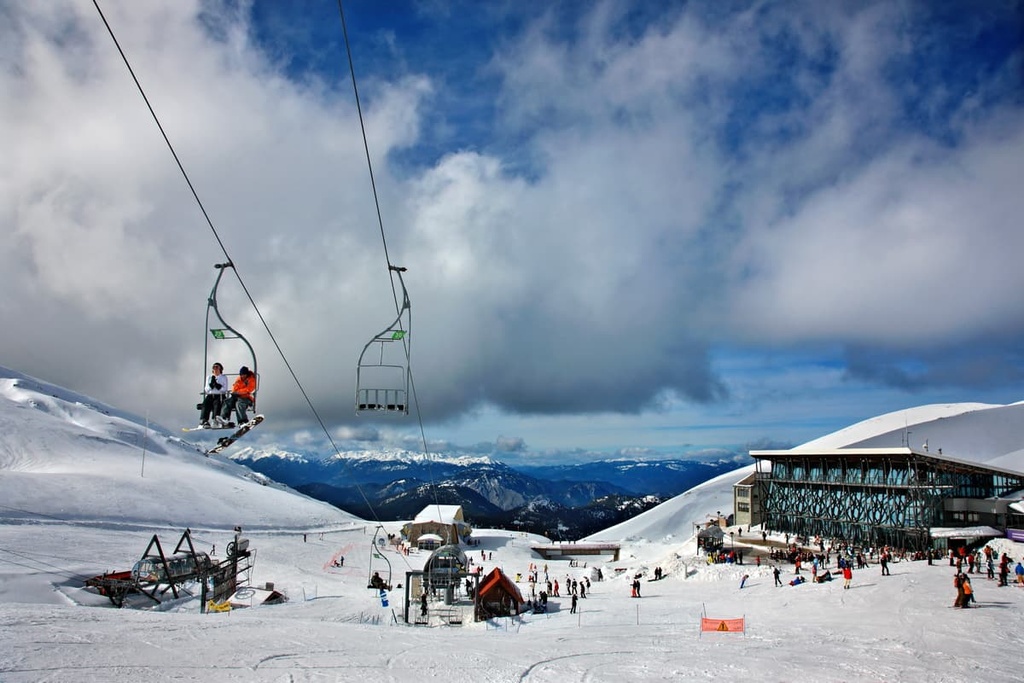
You can learn more about other European, Asian, and North American ski resorts in the World Mountain Lifts section of PeakVisor.
Before or during a trip to Greece, be sure to visit the country's official tourism website to learn more about its mountains and other natural features. The official tourism website of Greece is VisitGreece.gr.
While in Greece, you can also check out one of the many tourist info points and offices that are located across the country. You can normally find tourist information centers in Greece’s major cities, including in the central part of Athens. Most of these offices are staffed by knowledgeable local residents who can give you insight into the best things to do during your travels.

If you’re going hiking or backpacking in the Greek Ranges, some of the most popular accommodation options include small family-run hotels, guesthouses, hostels, apartments, and the like.
For example, on the Menalon Trail in the Peloponnese Peninsula, you can stay at the following places: Mpelleiko Hotel in Stemnitsa; Xenios, En Dimitsani, or Andrea Sofi guesthouses in Dimitsana; and Nymfasia Arcadia Resort in Vitina, among others.
Free or wild camping, as it is also called, is not really a thing in Greece like it is in northern Europe or in parts of North America. However, there are opportunities to go camping in Greece, so long as you stay at designated campsites.
For example, there are a number of campgrounds that are located in close proximity to Mount Olympus National Park, such as Mitikas, Sylvia, Stolos, Arion, and Orphe. You can find more campsites in Greece at E-camping.gr.
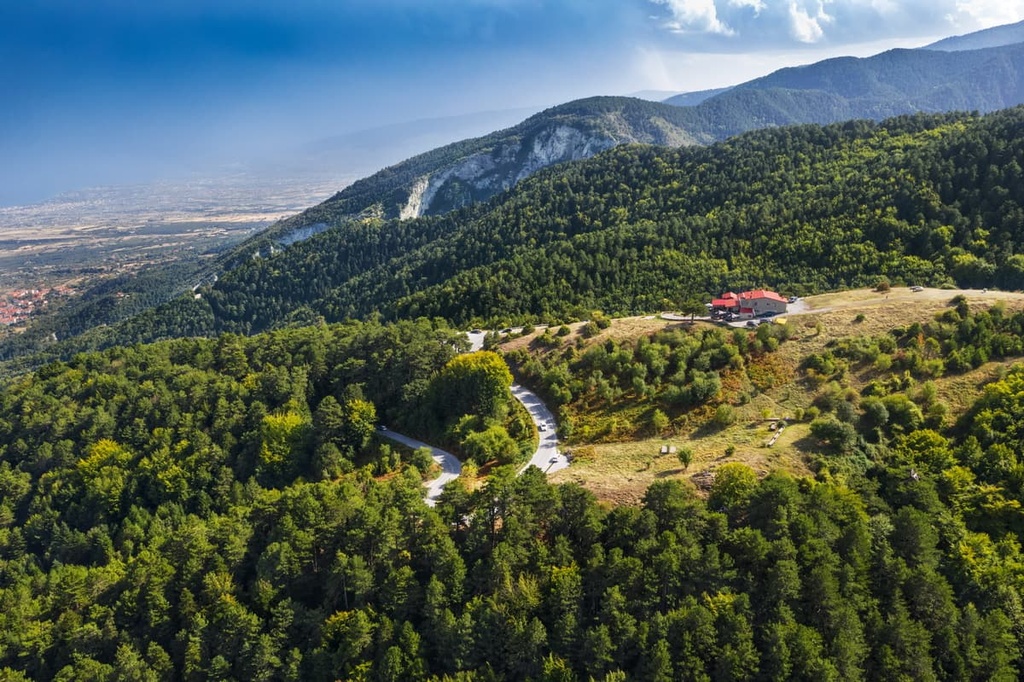
The closest major city to the Pindus Mountains is Ioannina, which is the capital of the Ioannina Regional Unit and of Epirus, one of the 14 administrative regions of Greece.
Ioannina is located to the south of Pindus National Park on the shores of the small Pamvotida Lake. More than 100,000 people live in the municipality. If you don't like big cities, you can also stay in one of the smaller villages that surround the park, such as Samarina, Perivoli, Metsovo, and Smixi, among others.
Of course, you can always start your journey to the Greek Ranges in Athens, which is where most people fly into anyway if they’re traveling to the country from overseas. From Athens, you can drive, fly, or take ferries to most of the major destinations in the range, so it’s a good starting point for most travelers.
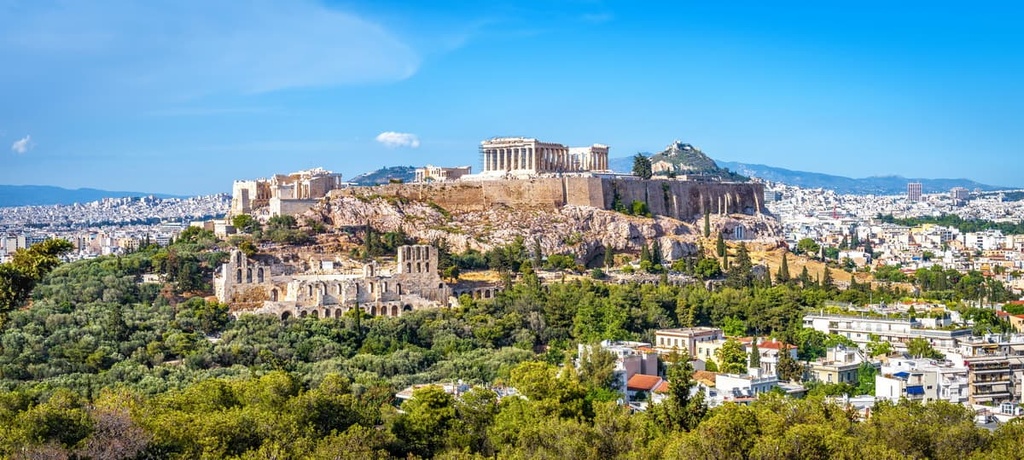
Explore Greek Ranges with the PeakVisor 3D Map and identify its summits.








